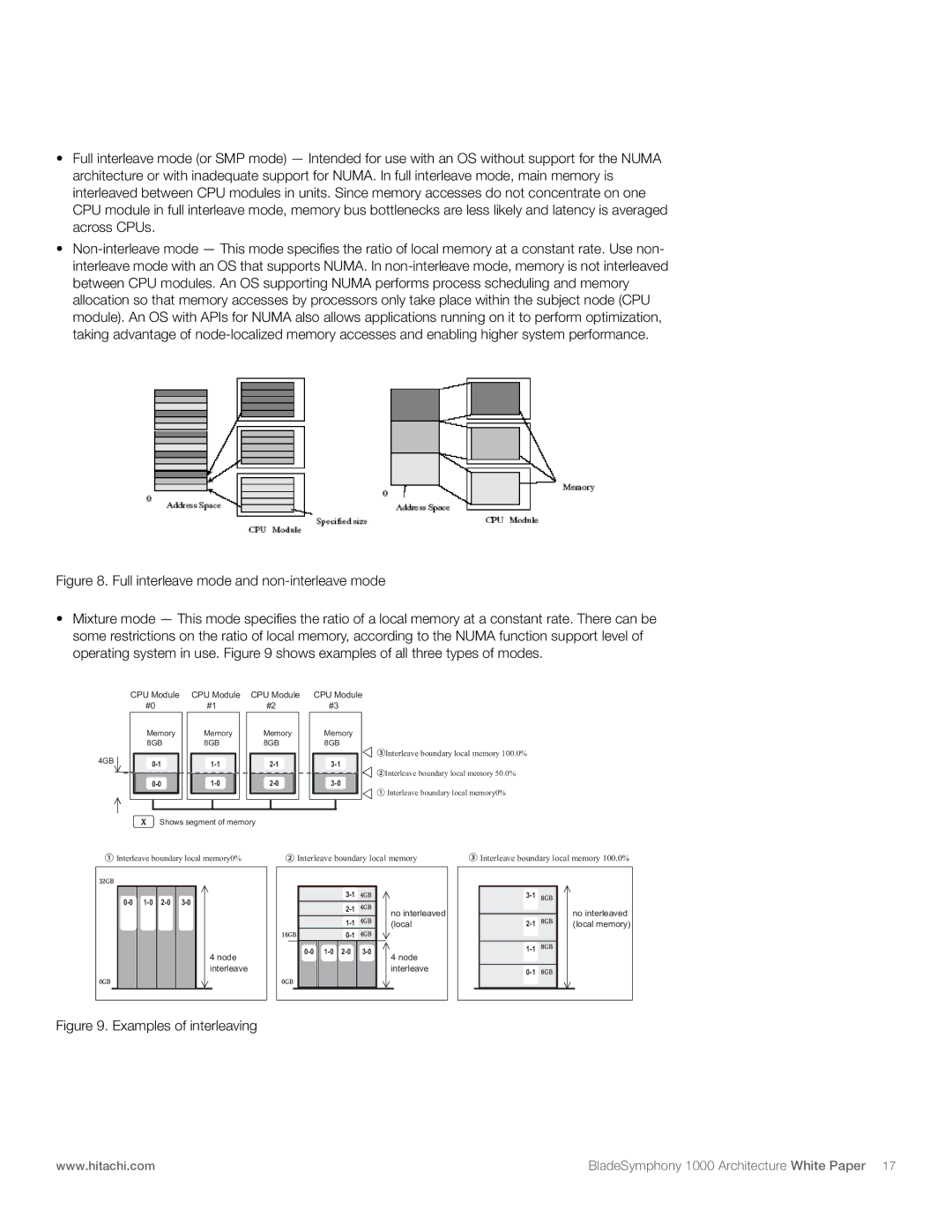
•Full interleave mode (or SMP mode) — Intended for use with an OS without support for the NUMA architecture or with inadequate support for NUMA. In full interleave mode, main memory is interleaved between CPU modules in units. Since memory accesses do not concentrate on one CPU module in full interleave mode, memory bus bottlenecks are less likely and latency is averaged across CPUs.
•
Figure 8. Full interleave mode and non-interleave mode
•Mixture mode — This mode specifies the ratio of a local memory at a constant rate. There can be some restrictions on the ratio of local memory, according to the NUMA function support level of operating system in use. Figure 9 shows examples of all three types of modes.
4GB
CPU Module CPU Module CPU Module CPU Module
#0 | #1 | #2 | #3 |
Memory | Memory | Memory | Memory |
8GB | 8GB | 8GB | 8GB |
|
|
| Interleave boundary local memory 100.0% |
|
|
| Interleave boundary local memory 50.0% |
|
|
| Interleave boundary local memory0% |
Shows segment of memory |
|
| |
![]() Interleave boundary local memory0%
Interleave boundary local memory0%
Interleave boundary local memory | Interleave boundary local memory 100.0% |
|
| 4 node |
|
| interleave |
|
| |
| no interleaved | |
| ||
| (local | |
|
| |
|
| 4 node |
|
| interleave |
| |
no interleaved | |
(local memory) | |
| |
|
Figure 9. Examples of interleaving
www.hitachi.com | BladeSymphony 1000 Architecture White Paper 17 |
